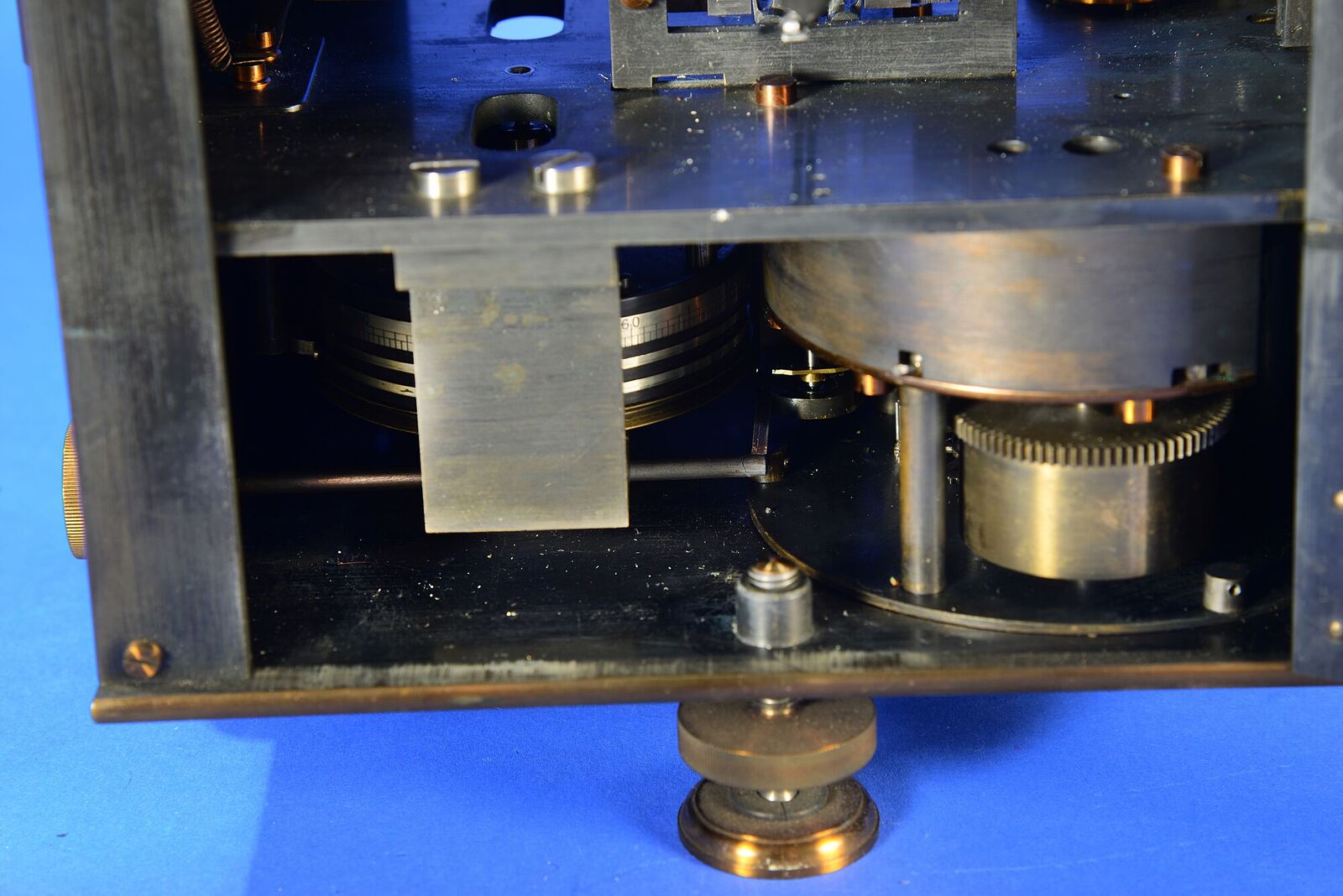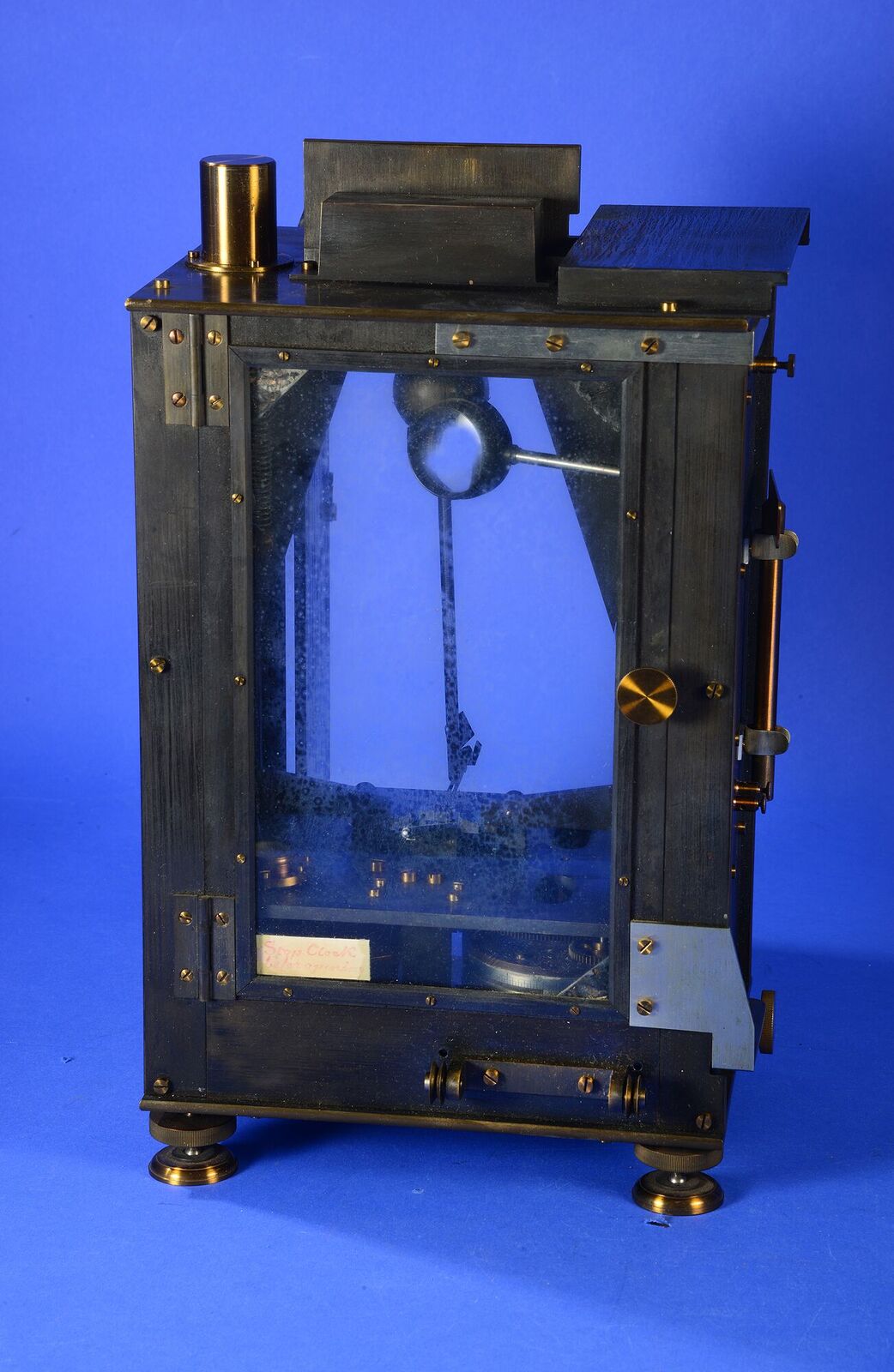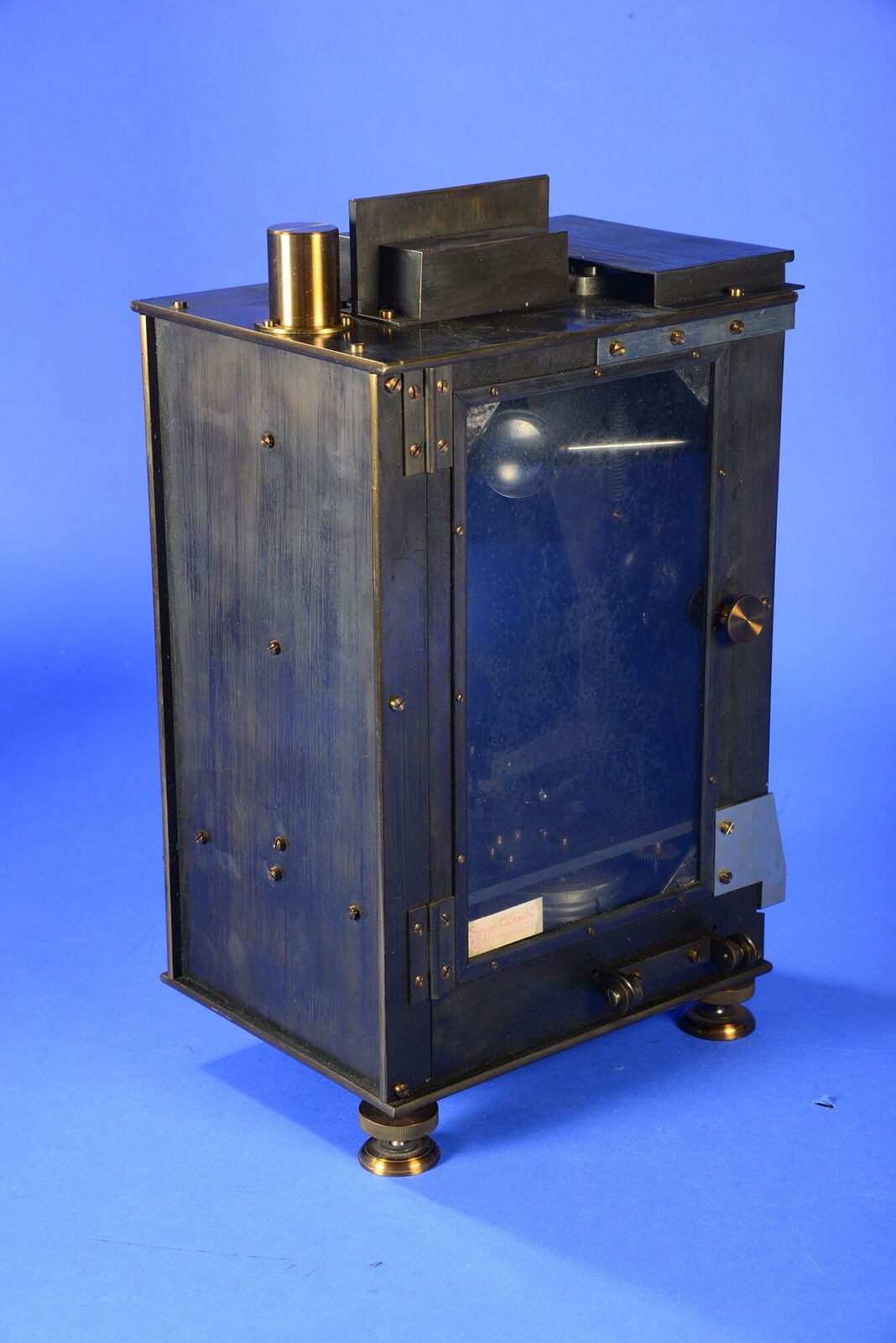The term “personal equation” came into use in the 19th century as scientists found that observers have inherent biases: some anticipate events, and some report events after they have occurred. Recognition of the problem led to a spate of personal equation instruments: some measured biases of this sort, and some reduced the effect of personal errors. Most of these instruments—as is the case with most inventions—failed to live up to expectations. Such was the case with those designed by Samuel Pierpont Langley (1834-1906), the third Secretary of the Smithsonian Institution.

Transit work led Langley to appreciate the problem of personal equation. He was soon familiar with the extensive literature on the subject, and critical of the ideas put forth by others. His solution, published in 1877, was to make intermittent observations of the transiting star, each one illuminated by a flash of light. Two years later, while visiting England, Langley was assured that the noted physicist James Clerk Maxwell had referred “in very eulogistic terms” to his method of eliminating the personal equation in transit observations.
Langley enjoyed the praise but knew that problems remained. Returning to the subject in 1888, he discussed the distribution of energy in the solar spectrum, the sensitivity of different eyes to different colors, and the time that one person needed to see different colors.
In 1889, after having examined some 50 devices for obtaining and correcting personal equation, Langley described a new device that reduced the probable error for a single observation to about “one fortieth of a second.” This involved a rotating diaphragm in the eyepiece that divided the field of view into several sectors, each representing a different moment in time. Langley thought his latest personal equation instrument was “very ingenious” but knew that many details remained to be worked out.
Ten years later, Langley visited Adam Hilger, a prominent precision instrument maker in London, and convinced him to make his device. The following year, Langley saw the progress Hilger had been made, suggested some more changes, and agreed to a final bill of almost £50—which was, at the time, a whopping amount of money for an experimental apparatus that he barely used.
Langley took possession of the personal equation machine in early 1901, wrote a glowing account for a Smithsonian publication, and then turned his attention to airplanes and astrophysical observations. Hilger’s final comment on the subject, written to Langley in March 1901: “I was particularly glad to hear that you find the personal equation machine now satisfactory—But no doubt a machine of that construction, once made, can be greatly improved, should another have to be made. I full trust you will favor me, some day, with some other order.”
The Langley-Hilger personal equation machine is now in the Political History collections of the National Museum of American History.
Related Resources
- Langley, “On the Possibility of Transit Observation without Personal Error,” American Journal of Science (July 1877): 55-60; “Professor Langley’s Apparatus for Eliminating Personal Equation,” Scientific American (Sept. 15, 1877): 170.
- Langley, “Energy and Vision,” American Journal of Science (Nov. 1888): 359-380; reprinted in Philosophical Magazine 27 (1889): 1-23. Langley read an abstract to the National Academy of Sciences, April 19, 1888.
- Langley, “On the Observation of Sudden Phenomena,” American Journal of Science 38 (1889): 93-100; reprinted in Sidereal Messenger 8 (1889): 291-299, and in Bulletin of the Philosophical Society of Washington 11 (1892): 41-50. Langley read this before Philosophical Society of Washington on March 2, 1889. An abstract appeared in American Journal of Psychology 2 (1889): 652, and The Observatory 12 (1889): 391.
- Langley, “A Method of Avoiding Personal Equation in Transit Observations,” Smithsonian Miscellaneous Collections 45 (1903): 225-229.
Produced by the Smithsonian Institution Archives. For copyright questions, please see the Terms of Use.





Leave a Comment